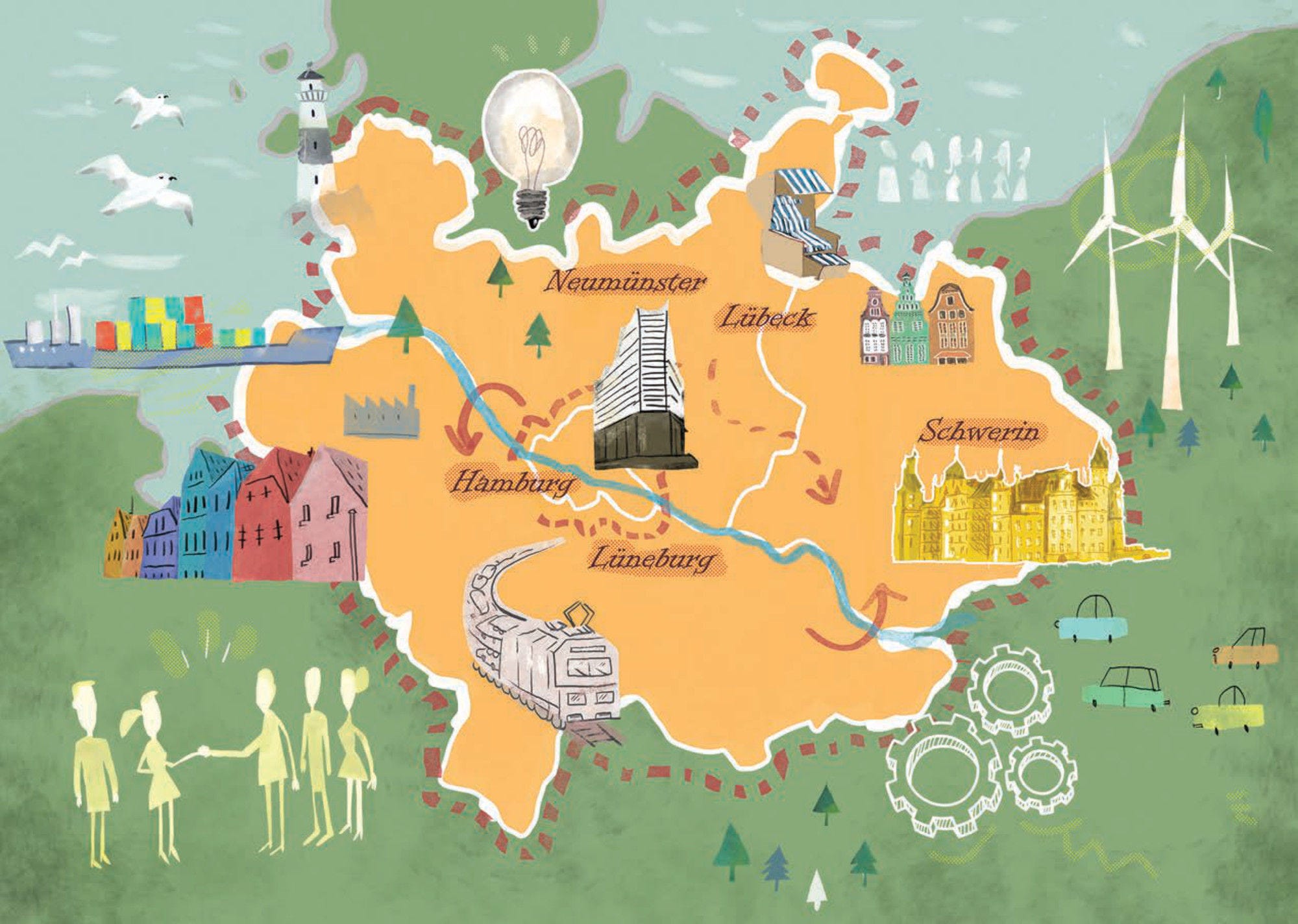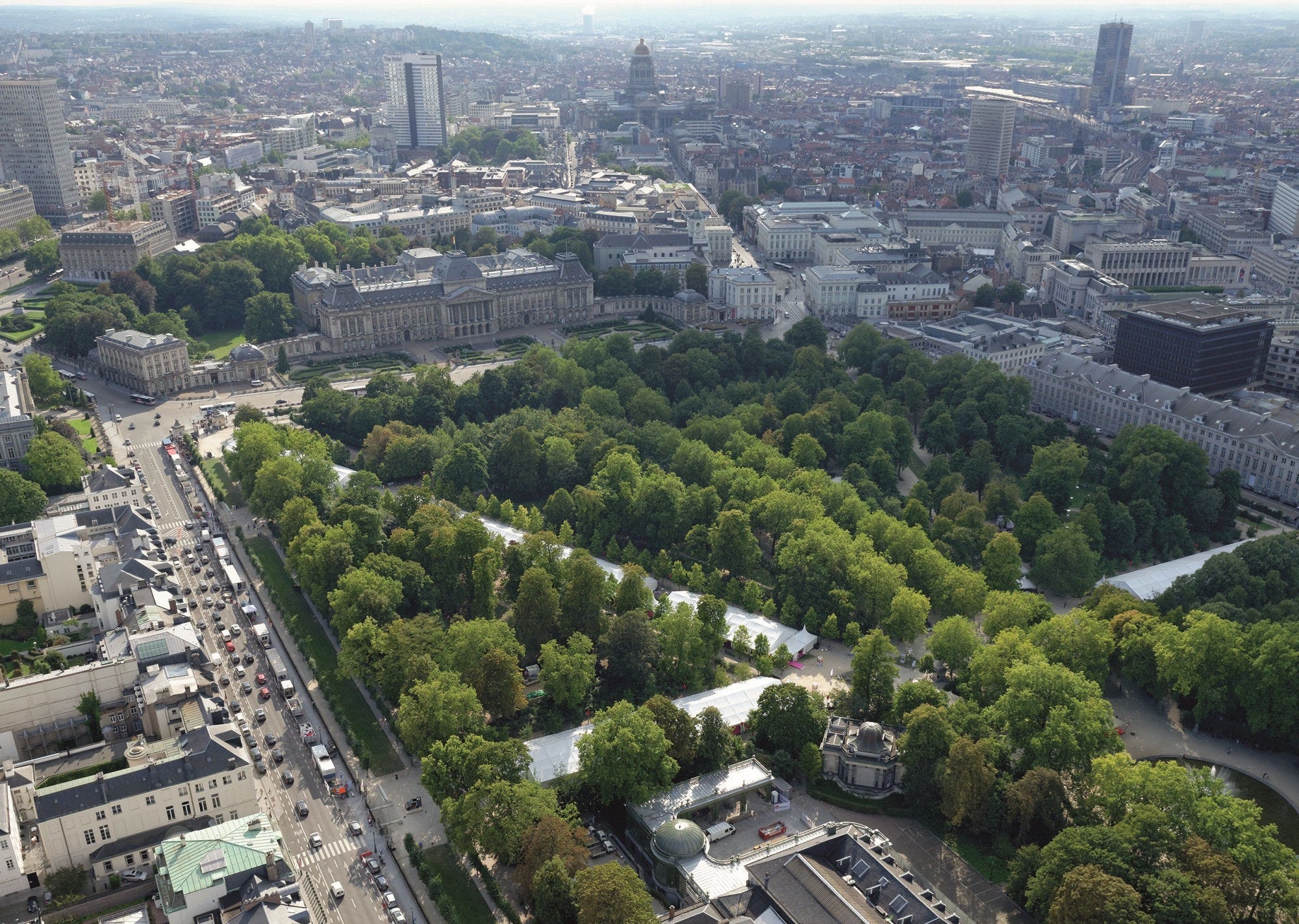With about 8% of national territory, the Hamburg Metropolitan Region (HMR) is the second largest in Germany. In the first OECD Territorial Review to cover Germany, the HMR is examined under the lens of its competitiveness, innovation, and sustainable urban and regional development.
OECD Territorial Reviews: Hamburg Metropolitan Region, Germany

Abstract
Executive Summary
Key messages
With almost 5.4 million inhabitants, the Hamburg Metropolitan Region (HMR) covers a heterogeneous mix of urban and rural areas fragmented across four federal states (the Free and Hanseatic City of Hamburg and parts of three states surrounding it: Schleswig-Holstein, Mecklenburg-Western Pomerania, and Lower Saxony). Although a co-ordination body is in place (HMR Office) to promote dialogue, it has no dedicated competency.
With Germany’s largest port, HMR has developed strong clusters, ranging from its traditionally leading maritime, logistics, and port-related industries to aviation, renewable energy, and life sciences. While HMR enjoys a strong economy overall, it fell behind all other metropolitan regions in Germany in terms of GDP per capita growth between 2005 and 2015, and it is quickly losing ground to regions in the South of Germany.
Labour productivity in HMR remains low relative to the average of comparable metropolitan regions across the OECD (similar to the level of Vancouver (Canada) and lower than that of Milan (Italy)), including due to the relatively lower level of skilled human capital and weak innovation capacity. Firms struggle with a shortage of skilled workers and scattered efforts to develop clusters undermine the region’s growth potential.
HMR is well-positioned to make the most of digitalisation in Germany, but a digital divide remains between urban and rural areas, including in terms of connectivity and broadband access coverage. HMR is investing in Intelligent Transport Systems (ITS) to reduce congestion in urban areas and improve mobility for residents of remote areas.
Despite successful regional collaboration in transport, notably through the Hamburg Traffic Association (HVV), large differences remain in terms of public transport accessibility within HMR, particularly between urban and rural areas, which raises challenges for further economic integration and territorial cohesion.
The fragmented spatial planning framework contributes to a persistent mismatch between supply and demand on the housing market. Housing prices and rents in Hamburg were among the highest in Germany in 2016 and are still on the rise, including in its immediate surroundings, whereas some municipalities in the second ring of HMR are losing population and face higher vacancies.
With its coastal location, strong capacity to generate wind power and the presence of competitive firms in the renewable energy sector, HMR could better use its potential to become a global leader in renewable energy, including through the North German Energy Transition (NEW 4.0) initiative, particularly with further national investment in energy transmission infrastructure.
The region offers a diverse range of cultural, natural and recreational assets, but these remain underexploited due to separate branding approaches and there is no co-ordinated tourism offer for the region.
Key recommendations
Strengthen collaboration across local, state, and national boundaries – notably with Scandinavia – to raise HMR’s international profile. An overarching recommendation is to “think big” beyond local, state, and even national boundaries to achieve a critical mass in the international context and maximise benefits for the entire region in the long term.
Develop an integrated regional innovation strategy. A joint focus on clusters in sectors such as energy, aviation, life and health sciences, food industry, and maritime industry will help create and diffuse knowledge more efficiently, tap into synergies across sectors and across different parts of the HMR, create new jobs, and achieve greater international visibility and competitiveness. A regional innovation agency could be established for this purpose, with adequate capacities and resources.
Invest in strengthening education and human capital. Policy-makers need to increase the low level of R&D while strengthening science-industry linkages. Exploiting the full potential of new research facilities, such as the European X-Ray Free-Electron Laser Facility (XFEL), should be a joint priority for policy-makers in HMR.
Seize the opportunities of digitalisation to nurture new sources of growth and improve public service delivery. Public, private, education and research sectors across the four states need to join forces to provide workers, students and apprentices with the necessary training. The HMR economic fabric is largely made up of SMEs, which typically face more difficulties in adopting digital technologies. Targeted support to help SMEs transition into digital technologies and solutions is particularly required.
Improve regional planning for housing and transport. Establishing a regional planning association in charge of developing an integrated regional plan covering all or a significant part of HMR would help better match housing supply and demand, promote more sustainable transit-oriented development, and integrate housing and transport planning. Bottlenecks in and around the city of Hamburg need to be alleviated. A shift from road to rail for freight transport should also be encouraged. Accessibility in rural areas needs to be improved, for example by implementing a single tariff scheme across HMR and harnessing the potential of digital mobility solutions.
Leverage the region’s biodiversity and leadership in renewable energy production. Greater co‑operation should take place across administrative boundaries on Biosphere Reserves, for example. To encourage energy efficiency throughout HMR, urban and regional development plans should include energy concepts for production and consumption.
Join forces around a common cultural and tourism brand as a driver of balanced regional growth. A joint marketing and branding strategy could help raise the visibility and attractiveness of HMR to skilled workers, firms and visitors.
In sum, a more coherent and integrated approach to innovation, planning, and branding will offer a powerful tool to boost productivity, reconcile competing objectives for land, respond more effectively to demographic pressure, improve quality of life both for residents and for visitors, and raise the national and international profile of HMR.
In the same series
Related publications
-
 21 November 2024
21 November 2024 -
30 July 2024












